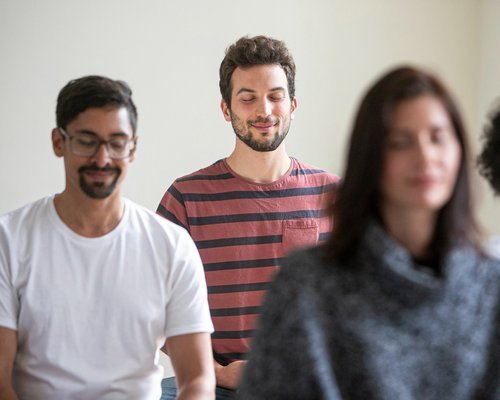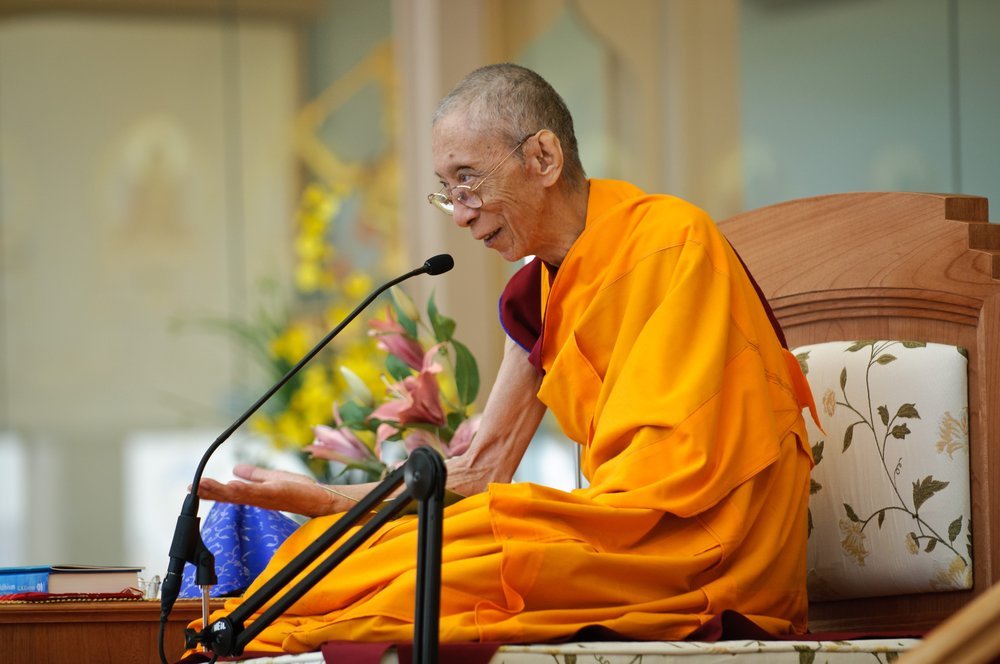DISCOVER THE JOY OF MEDITATION
The purpose of meditation is to cultivate positive states of mind, conducive to peace and well-being, and overcome negative habits of mind. Happiness is a state of mind, and cannot be found in external situations.
If we train our mind to become peaceful, we will be happy all the time, regardless of whatever adverse conditions we might encounter. Therefore it is important to train our mind through meditation.
-
No. We should always be focusing on something in meditation, this is called our object of meditation. We can prepare our mind for meditation by focusing on a neutral object such as the breath but actual meditation involves focusing on and familiarizing our mind with a virtuous object, for example love or compassion. By familiarizing our mind with these objects inside meditation we will be able to keep a positive and happy mind outside of meditation more easily, and we will notice over a period of time that our mind starts to change on a deeper level.
-
Getting our mind completely still and distraction-free requires practice, patience and familiarity. It is very common for distractions to arise in meditation. During the meditation session we can practice reducing mental busy-ness by returning our mind back to our main object of meditation whenever we notice it has become distracted. Outside of meditation we can train in reducing our daily distractions so that when we sit down to meditate we notice that our mind is naturally more calm and clear.
-
There is no set time of the day that is better for meditation as it depends upon the individual. Some people find that they have a clearer mind at the start of the day and prefer meditating in the morning. Others prefer to meditate in the evening to unwind after their day, but you can also meditate at any point throughout the day. Once we find a time of day that is best for us it is useful to have a routine of trying to meditate at the same time each day. This will help to keep our meditation practice regular and consistent.
-
We do not have to meditate for a long period of time each day to experience its benefits. Just by doing meditation for 10-15 minutes each day we will be able to reduce feelings of stress and tension, cultivate positive states of mind and overcome negative ones.
-
Sitting with our legs crossed in meditation is a traditional posture can be a good way keep our mind focused, but it is not necessary. You can do your meditation practice sitting in a chair as well.
The most important feature of the meditation posture is to make our back straight but not tense. Keeping our back straight will prevent our mind from becoming sluggish or sleepy.
-
Because meditation is a training of the mind it is better to remove external distractions, such as music so that we are able to focus more clearly on the inner development of transforming and changing our mind.
Common Questions
2 Types of Meditation Taught at KMC Indy
Placement meditation
Having found our object through analytical meditation, we then concentrate on it single-pointedly for as long as possible to become deeply acquainted with it. This single-pointed concentration is placement meditation.
Often, placement meditation called simply ‘meditation’.
Analytical meditation
When we contemplate the meaning of a spiritual instruction that we have heard or read, we are engaging in analytical meditation. By deeply contemplating the instruction, eventually we reach a conclusion or cause a specific positive state of mind to arise. This is the object of placement meditation.
Often, analytical meditation is called simply ‘contemplation’.
Placement meditation depends upon contemplation, and contemplation depends upon listening to or reading spiritual instructions.
When the turbulence of distracting thoughts subsides and our mind becomes still, a deep happiness and contentment naturally arises from within.
- Geshe Kelsang Gyatso Rinpoche




